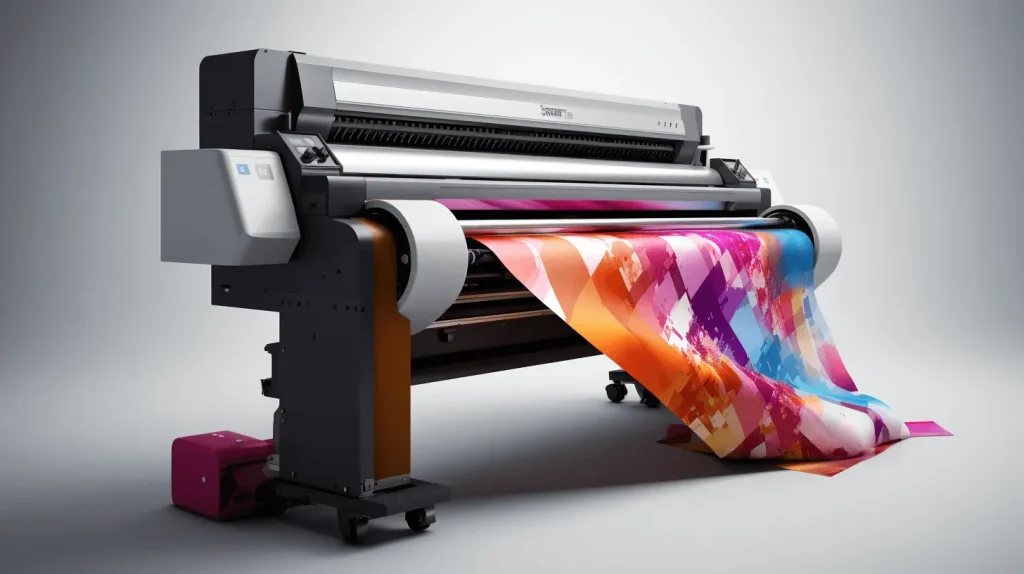DTF printing, or Direct-to-Film printing, is revolutionizing the textile printing landscape with its innovative approach to design transfer. This cutting-edge technology offers a range of benefits that make it a compelling option for businesses seeking efficiency and quality in their printing processes. By employing specialized methods to print directly onto a film, DTF allows for vibrant, full-color designs that can be easily transferred to various fabrics. As a sustainable textile printing solution, it caters to the increasing demand for eco-friendly practices in modern manufacturing. Dive into the world of DTF printing and discover why it is set to define the future of print-on-demand techniques.
Direct-to-Film printing, often referred to simply as DTF, stands at the forefront of modern textile printing innovations. This technique harnesses advanced printing technology to transpose designs from film to fabric, creating a seamless transfer process. Offering a flexible solution for businesses of all sizes, DTF promotes versatility and vivid color representation across a myriad of materials. In an era where sustainable textile printing practices are paramount, DTF stands out by utilizing water-based inks that minimize environmental impact. Explore the realm of Direct-to-Film solutions and understand how they can enhance your printing capabilities while aligning with today’s eco-conscious market.
The Advantages of Direct-to-Film Printing in Textile Production
Direct-to-Film (DTF) printing offers several distinct advantages that make it an essential technique for modern textile production. One of its primary benefits is the streamlined production process it enables. Unlike traditional methods that may require extensive setup time, DTF printing allows for quicker turnaround on projects. Producers can move directly from design to print, making it particularly beneficial for businesses that need to respond swiftly to market demands. This efficiency not only speed up production but also means that businesses can offer a wider variety of designs without incurring significant additional costs.
Another advantage of DTF printing lies in its ability to produce vibrant colors with exceptional detail. This technology uses specialized inks that adhere well to the film, resulting in high-quality prints that can capture intricate designs and gradients. As companies increasingly seek to differentiate their products through eye-catching graphics, the superior quality offered by DTF can make a significant impact on brand identity and customer satisfaction. Furthermore, the durability of DTF prints—known to withstand multiple washes without fading—ensures that products maintain their aesthetic appeal even after repeated use.
Frequently Asked Questions
What is Direct-to-Film (DTF) printing and how does it work?
Direct-to-Film (DTF) printing is a modern textile printing technology that involves printing designs onto a specialized film, which is then transferred to fabric using heat and pressure. This innovative technique allows for vibrant, full-color prints that are suitable for a wide range of fabrics, making it a popular choice in the textile industry.
What are the benefits of using DTF printing over traditional methods?
DTF printing offers numerous benefits compared to traditional textile printing methods like screen printing and DTG printing. These advantages include cost-effective production, compatibility with various fabrics, vibrant color output, durability, eco-friendly options with water-based inks, and reduced waste through print-on-demand capabilities.
Is DTF printing environmentally friendly?
Yes, DTF printing is considered eco-friendly because it utilizes water-based inks, which are much less harmful to the environment compared to conventional solvent-based inks. This sustainable textile printing option helps businesses minimize their environmental footprint while still delivering high-quality prints.
Can DTF printing be used on all types of fabrics?
One of the key advantages of DTF printing is its versatility. It can be used on a wide variety of fabrics, including cotton, polyester, and blended materials, making it an excellent choice for diverse applications ranging from clothing to promotional items.
How does DTF printing reduce waste and improve efficiency?
DTF printing helps reduce waste by enabling print-on-demand capabilities, allowing businesses to produce only the quantities needed. This minimizes excess inventory and material waste, aligning with the growing trend towards sustainability in the textile printing industry.
What recent advancements are being made in DTF printing technology?
Recent developments in DTF printing technology include faster printing speeds, improved heating elements for transfers, and the emergence of specialized printers designed for DTF applications. These innovations enhance productivity and ensure high-quality outputs, keeping DTF competitive in the textile printing market.
| Key Points | Details |
|---|---|
| Cost-Effective Production | Lower setup costs, no color separation, reduced labor costs, and minimal material waste. |
| Versatile Fabric Compatibility | Suitable for cotton, polyester, and blends, making it ideal for a variety of applications. |
| Vivid Colors and Durability | Produces rich colors and maintains quality through multiple washes, enhancing customer satisfaction. |
| Eco-Friendly Options Available | Utilizes water-based inks, reducing environmental impact compared to solvent-based inks. |
| Reduced Waste | Print-on-demand capabilities minimize excess inventory and improve resource management. |
| Easy Handling and Transfer | Simple application allows for intricate designs that are hard to achieve with traditional methods. |
Summary
DTF printing is revolutionizing the textile printing industry by offering a range of benefits that make it an appealing alternative to traditional methods. Not only is DTF printing cost-effective, but it also provides versatility in fabric compatibility, vibrant colors, and durability for high-quality outputs. With eco-friendly options and a significant reduction in waste, businesses can align with sustainable practices while enhancing their production capabilities. As the technology continues to advance, embracing Direct-to-Film printing will likely be a crucial step for those seeking to thrive in the competitive textile market.



